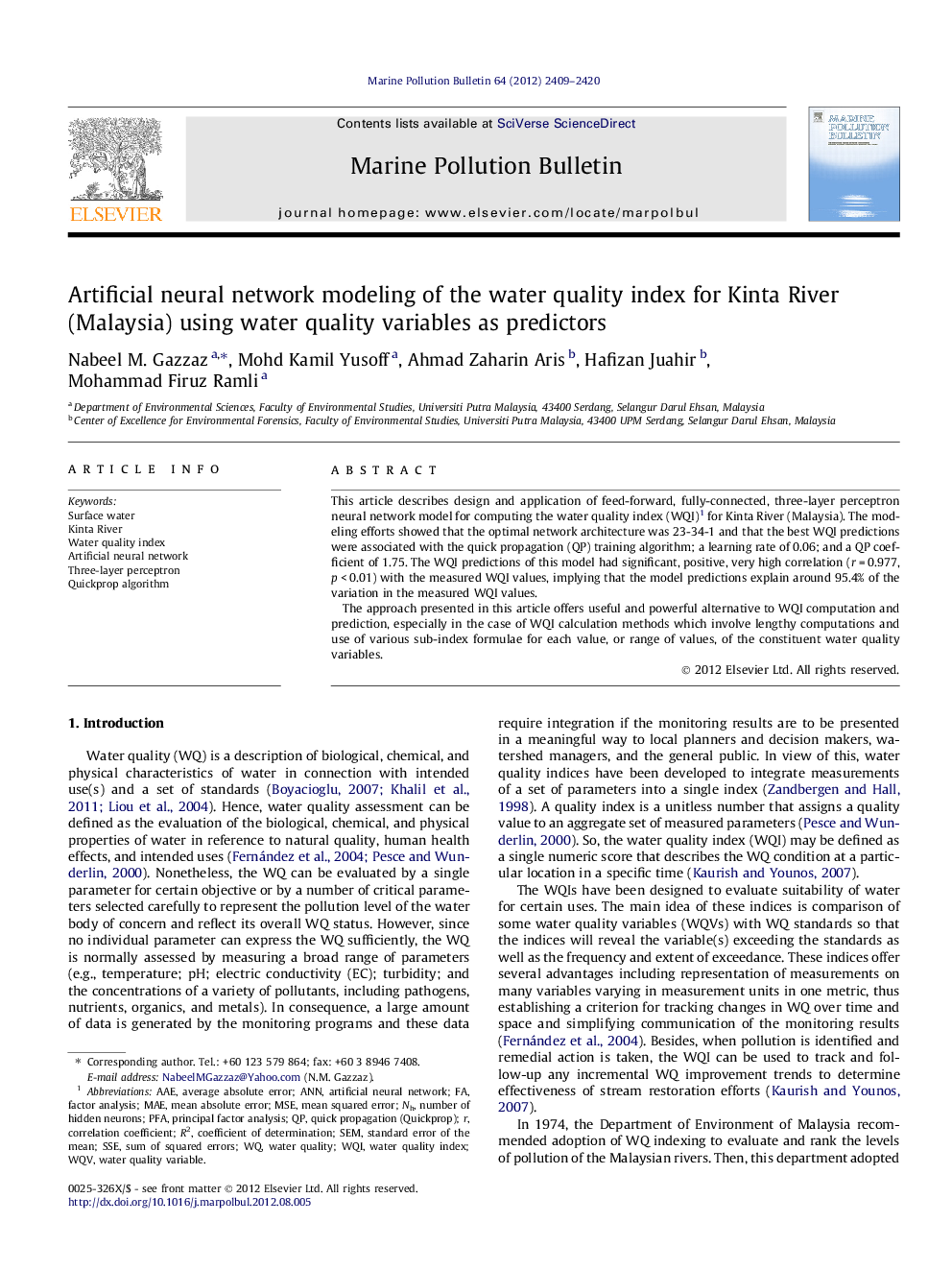| Article ID | Journal | Published Year | Pages | File Type |
|---|---|---|---|---|
| 6360837 | Marine Pollution Bulletin | 2012 | 12 Pages |
This article describes design and application of feed-forward, fully-connected, three-layer perceptron neural network model for computing the water quality index (WQI)1 for Kinta River (Malaysia). The modeling efforts showed that the optimal network architecture was 23-34-1 and that the best WQI predictions were associated with the quick propagation (QP) training algorithm; a learning rate of 0.06; and a QP coefficient of 1.75. The WQI predictions of this model had significant, positive, very high correlation (r = 0.977, p < 0.01) with the measured WQI values, implying that the model predictions explain around 95.4% of the variation in the measured WQI values.The approach presented in this article offers useful and powerful alternative to WQI computation and prediction, especially in the case of WQI calculation methods which involve lengthy computations and use of various sub-index formulae for each value, or range of values, of the constituent water quality variables.
Graphical abstractDownload full-size imageHighlights⺠This study describes the application of ANN to function approximation problems. ⺠Calculating WQIs where the sub-indexing involved is time-consuming and prone to error. ⺠Model performance was evaluated by means of four criteria: MSE, AAE, r, and R2. ⺠Study developed ANN model providing very high WQI prediction capacity (R2 = 0.954). ⺠ANN provides satisfactory models for easy, quick computation and prediction of WQI.
